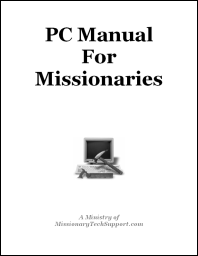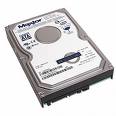 We know that the pen is mightier than the sword, but is the pen drive mightier that the hard drive? A USB flash, jump, or pen drive is something that most people own and use to store files. While these drives are useful for backups and file transfers, they can do much more. As a solid state drive they are not as fragile as your computer’s hard drive. One way to get more out of your USB drive is to run applications from it. Many applications have been created or adapted to run completely from your USB drive. That means that you can use your programs, bookmarks, and files from any computer. This empowers you to leave your computer at home and carry your USB drive instead as it is smaller, lighter, more rugged, and less likely to be stolen that your laptop. Many of the portable apps, as they are called, are free. There are two main “platforms” or launchers – U3 and PortableApps. U3 comes on certain USB drives, but is not worth paying extra for since PortableApps is a free equivalent. You can download many other individual programs. Here is a list of my favorite portable apps. You can also install these portable apps in your Dropbox folder instead of your USB drive.
We know that the pen is mightier than the sword, but is the pen drive mightier that the hard drive? A USB flash, jump, or pen drive is something that most people own and use to store files. While these drives are useful for backups and file transfers, they can do much more. As a solid state drive they are not as fragile as your computer’s hard drive. One way to get more out of your USB drive is to run applications from it. Many applications have been created or adapted to run completely from your USB drive. That means that you can use your programs, bookmarks, and files from any computer. This empowers you to leave your computer at home and carry your USB drive instead as it is smaller, lighter, more rugged, and less likely to be stolen that your laptop. Many of the portable apps, as they are called, are free. There are two main “platforms” or launchers – U3 and PortableApps. U3 comes on certain USB drives, but is not worth paying extra for since PortableApps is a free equivalent. You can download many other individual programs. Here is a list of my favorite portable apps. You can also install these portable apps in your Dropbox folder instead of your USB drive.
- Portable Firefox, an internet browser
- Portable Thunderbird, an email client
- Portable AbiWord, a word processor
- Portable Gnumeric, a spreadsheet
- Portable OpenOffice, a office suite
- Skype, a secure VOIP, chat, file transfer client
- FreeCommander, a file browser utility
- IrfanView, an image viewer
- VLC, a media player
- Foxit Reader, a PDF viewer
- DeepBurner, a CD writer application
- TrueCrypt, encryption for folders
- CyberShredder, a permanent file deletion tool
- SIW, a way to find information about your computer
- JBmail, a very simple yet powerful email client
- Pocket Bible for Windows, a Bible study program – bnot free
- Blumind Mind Mapper, a mind mapping program
- Notepad ++, a programming code editor
- Database Browser, a MySQL & MS-SQL client
- Metapad, an alternative to Notepad

 The hard drive is one of the most fragile components of your computer because it contains the most moving parts. Hard drives, like people, will eventually die, some of old age, some of disease, and some of accidents and injuries. Physical trauma like dropping your laptop or knocking a desktop over, exposure to magnets, heat, electrical problems, and software problems may cause your hard drive to crash unexpectedly.
The hard drive is one of the most fragile components of your computer because it contains the most moving parts. Hard drives, like people, will eventually die, some of old age, some of disease, and some of accidents and injuries. Physical trauma like dropping your laptop or knocking a desktop over, exposure to magnets, heat, electrical problems, and software problems may cause your hard drive to crash unexpectedly.